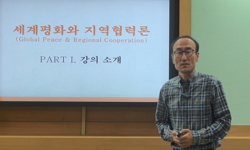<P><B>Abstract</B></P> <P>South Korea has become globally famous for various tetrapod footprints from Upper Cretaceous strata. Here we report the first Early Cretaceous “large” tracksite from the Sanbukdong F...
http://chineseinput.net/에서 pinyin(병음)방식으로 중국어를 변환할 수 있습니다.
변환된 중국어를 복사하여 사용하시면 됩니다.
- 中文 을 입력하시려면 zhongwen을 입력하시고 space를누르시면됩니다.
- 北京 을 입력하시려면 beijing을 입력하시고 space를 누르시면 됩니다.



A new dinosaur tracksite from the Lower Cretaceous Sanbukdong Formation of Gunsan City, South Korea
한글로보기https://www.riss.kr/link?id=A107467894
- 저자
- 발행기관
- 학술지명
- 권호사항
-
발행연도
2018
-
작성언어
-
- 주제어
-
등재정보
SCI,SCIE,SCOPUS
-
자료형태
학술저널
-
수록면
208-216(9쪽)
- 제공처
-
0
상세조회 -
0
다운로드
부가정보
다국어 초록 (Multilingual Abstract)
<P><B>Abstract</B></P> <P>South Korea has become globally famous for various tetrapod footprints from Upper Cretaceous strata. Here we report the first Early Cretaceous “large” tracksite from the Sanbukdong Formation of an unnamed small basin in the west of Gunsan City, North Jeolla Province. The tracksite (720 m<SUP>2</SUP>) produced 425 tracks. Among them, eleven ornithopod and three theropod trackways (189 tracks) were measured and mapped in detail. Most of ornithopod tracks are large (32 cm–51 cm in length) and very similar to pes imprints of <I>Caririchnium lotus</I> from China in that the general track dimensions and large heel pad impressions are typically longer than wide. They are attributable to basal hadrosauroids based on their stratigraphic and palaeogeographic occurrence as well as skeletal evidence in Korea. Eleven ornithopod trackways show gregarious behaviour and two main directions of movements along a lake margin. One movement is that of a group that went back and forth along the lacustrine margin and the other movement showing dinosaurs that came to the lakeshore probably to drink water or any other purposes. One trackway consists of 39 consecutive tracks with the distance of 39 m, representing the longest Early Cretaceous ornithopod trackway ever found in Korea. Sanbukdong ornithopod tracks suggest that basal hadorsauroids had the same growth pattern as derived hadrosaurids such as a brief period where it was very rapid. They also support independently that the majority of Early Cretaceous basal hadrosauroids were smaller than Late Cretaceous hadrosaurids in body size. Two theropod trackways consist of large tracks (more than 40 cm in length) and closely resemble <I>Irenesauripus glenrosensis</I> from the Lower Cretaceous of Texas which was inferred to be of <I>Acrocanthosaurus</I> origin. It is reasonable that they are attributable to carcharodontosaurids because their skeletal materials were already reported from the Lower Cretaceous strata in China and Korea. This new tracksite indicates that large ornithopod and theropod dinosaurs lived in the Early Cretaceous in Korea and strengthens previous hypotheses of their existence based on only isolated teeth.</P> <P><B>Highlights</B></P> <P> <UL> <LI> Discovery of the largest dinosaur tracksite from the Early Cretaceous of Korea. </LI> <LI> Large ornithopod and theropod tracks strengthen previous hypotheses of their existence in Korea based on only isolated teeth. </LI> <LI> Ornithopod tracks imply a possible ichnofaunal connection between Korea and China in the Early Cretaceous. </LI> <LI> Basal hadrosauroids might have the same growth pattern as derived hadrosaurids. </LI> </UL> </P>




 ScienceON
ScienceON






